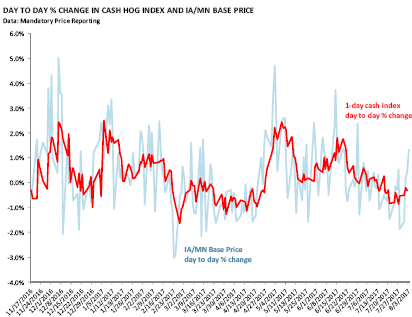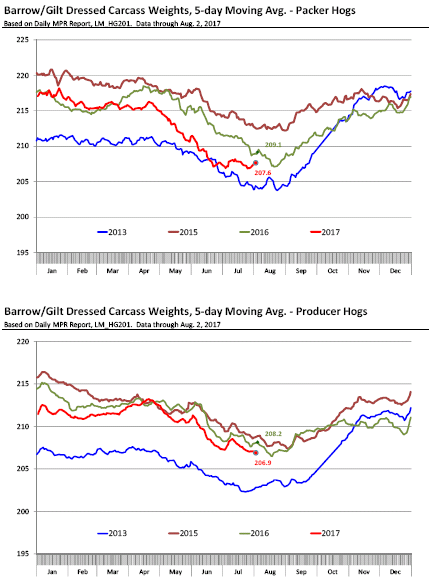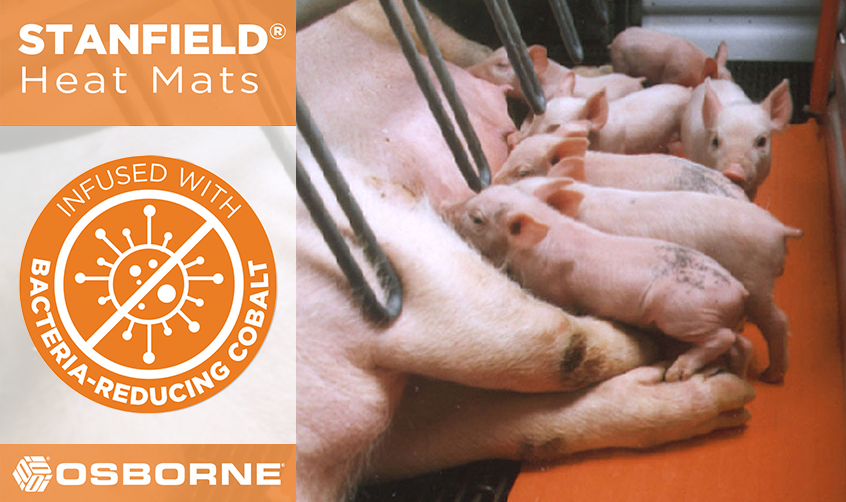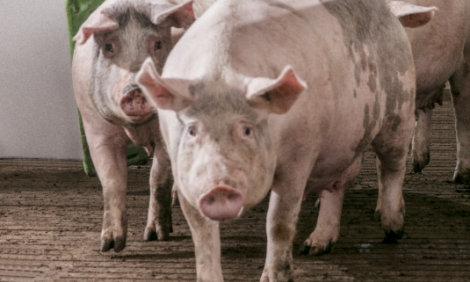



CME: August Futures Hog Contract Closed at Under $82/cwt
US - The August futures hog contract closed last Thursday night at under $82/cwt and yet spot cash hog prices continued to hold quite firm, reports Steiner Consulting Group, DLR Division, Inc.With just a few days left until contract expiration, market participants will likely pay very close attention to the trends in the cash market and already it looks like early trading Friday morning has received a boost from the higher close the previous night.
One item that we have found particularly interesting is the divergence in recent days between the negotiated IA/MN base cash hog price and the 1-day cash index. The one day index includes net negotiated and formula prices so it makes sense that it will differ in both absolute value terms and day to day moves from the IA/MN base.
However, directionally prices move together over time (see chart). The IA/MN base price is quoted twice a day, so it provides a more immediate indication of the price levels achieved in the cash market. On the other hand, the 1-day index is calculated using day prior values.

On Thursday night, the IA/MN base cash hog price closed at a weighted average of $81.71/cwt, 1.3 per cent higher than the previous day. And this was not just a one day blip, the base price has been increasing for each of the part four days and it is at the highest level since 27 July.
The IA/MN cash index has proved to be quite volatile over time so keep this in mind when drawing conclusions. The fact that it has been up for four consecutive days is more important to us than just the one day move.
Higher negotiated cash prices have come at a time when the August contract still is pricing a drop of around $5 by expiration. Why are cash hog prices firm? For one, pork demand, particularly demand for pork bellies remains robust and packers are willing to hold steady cash bids in order to maintain product flow.
Barrow and gilt weights remain under year ago levels, an indication that producers are still quite current with their inventories. What stands out recently is a shift in the structure of hog weights. USDA reports a breakdown in the weight of hogs that are producer owned and the weight of hogs that are packer owned.

For much of the spring and early summer, the weight of packer owned hogs declined at a faster pace and opened up a significant gap with a year ago. By late June, packer owned hogs were as much as 2 per cent under last year while producer hog weights for that time period were down only 0.4 per cent.
Currently, packer owned barrow and gilt weights are 0.7 per cent under last year while the weight of those owned by producers is running at 0.6 per cent under last year. Earlier in the summer it could be argued that packer hog weights were declining at a faster pace because packers were looking to manage margins (pick your own tree first theory).
But why would that have changed, recently? We are sure some of our readers have a ideas about this as do we, but engaging in speculation is not very productive. The point that at least in the short term the cash hog market appears to be on a firmer footing that futures were expecting even a few days ago.
Pork belly prices are holding above $200/cwt and this has bolstered overall cutout values. While packer margins in recent days have tightened up a bit, they are still well in positive territory and something they can live with, especially with more hog supplies expected to come in the next three months.
Pork exports in the last two weeks have shown improvement and we will provide an update on export projections for July and August in our Monday morning report.








